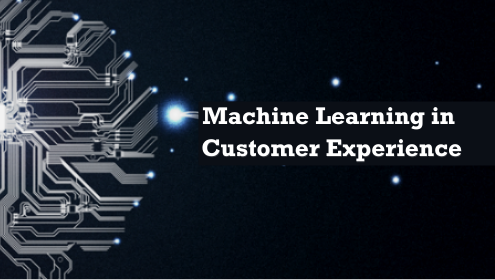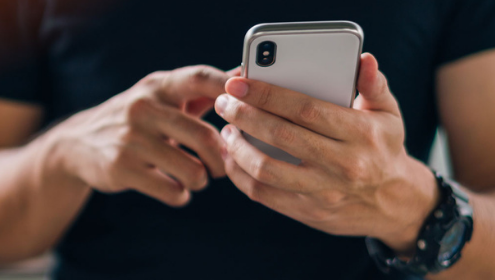
It’s About Time to Innovate Your Customer Experience Strategy

At the end of 2019, we celebrated the 50th anniversary of the Internet. It’s been only 50 years – would you believe it? Now let’s think about the history of trading as such and the fact that it originated in prehistoric times. Historians believe that the first long-distance trade occurred around 3000 BC.
During its relatively short existence, how much has the Internet changed the traditional trade, or what we nowadays call commerce?
The answer is – almost entirely. Accessibility, choice, convenience, personalization… everything has changed. The Internet allows us to do the things we could’ve never imagined only 20 years ago. On the other side, it has forced organizations to rethink their business models not only to thrive but in the first place – to survive. The ones who refused to embrace the perks of modern technology have been overrun by the ones who, at the time, suggested business models some might have called crazy. Just think about Blockbuster – bankrupted because of strong competition from on-demand video services. Nokia – who went from being the #1 mobile phone brand in the world to selling the business due to lack of innovation initiatives and strategic leadership. Or Kodak – who failed to recognize the need for diversification and tackling new markets. And back then, who would have thought so?
Uber Drivers, Airbnb Superhosts and Instagram Influencers
On the contrary, the Internet has also given us platforms that influenced, changed and ultimately shaped our daily lives. Now we’ve got giants who once started with crazy ideas to disrupt business models but ultimately ended up shaping the whole economy. They went from providing a single, innovative service, to redefining industries and even creating new professions. We now have Uber Drivers, Airbnb Superhosts and Instagram Influencers as real jobs. We see that disruptors are creating platforms and influencing various industries. After a huge success in ride-hailing, Uber launched Uber Eats, Uber Jump and Uber Freight – for food ordering and delivery, scooter and electric bike-sharing, and carriers and shippers matching respectively. Moreover, they are developing a shared air transportation system, planned for 2023, and state that “with Uber Air, this future is closer than you think”.
Now, what’s new when it comes to customer experience? We hate to break it to you, but loyalty programs and mobile apps are not a new thing anymore.
Doing something everyone does for the sake of being “fancy” enough won’t do the work. Loyalty program – yes, but what kind? Why is it different than others (so many others, in fact)? What is the unique characteristic of your customers, that your loyalty program must reflect? And how can you leverage technology to facilitate customer needs in a unique way? We must put ourselves in their shoes and think of every single thing a customer may want.
That’s why it’s important to start an innovation process from scratch, using proven techniques and working with the experts to facilitate the process. Design thinking and human-centric innovation can help brands evolve and enhance touchpoints in a way that truly makes a difference.
Complex Journey, Simple Experiences
Think about a local business that sells homemade ice-cream, all kinds of different, unusual flavors. Let’s say I’m a frequent visitor and I have a usual mix that I pick, combining one fruit and one chocolate or nut flavor. Think about the store employee who knows how many times I have purchased which flavor and can immediately understand what I like and suggest something similar. Sure, I can fight my spot in the queue and randomly ask to taste a few flavors. But imagine the awesomeness of this personalized experience where someone addresses me by name and suggests the flavors I might definitely like. Remember Starbucks and its enormous success because of a unique brand experience. Simple things matter and delight your customers. On the other hand, the store staff is more productive, more engaged and empowered to upsell.
Another example. There is a skincare brand I use many products from, on a daily basis, and they are not cheap. What I do is I usually wait for my most visited perfumery chain to have a special offer (like 1+1 free, or buy 2 get 3 offers), get the items I am using and have my own stock for a while. However, sometimes they don’t have these offers for quite a long time and I urgently need something. What happens then is that I either visit another store which has a better price or just buy anywhere I am passing by if I’m really running out of the product. Now, imagine… personalized special offers. They could be fully based on my buying history and usage habits. That’s not difficult to analyze considering the fact I am using the same products for several years already. The store would be able to know if I now need a new lotion and if the next thing I will need is a hand crème or micellar water. Imagine knowing you will always be valued for your brand loyalty and always be treated in a personalized way. There would be no need to think about buying that product in another store ever again.
Now you must be thinking: alert, alert – customer data privacy! Yes, it’s a crucial point in implementing any of these innovations. It could make it or break it – in terms of both legal risks and customer trust. But it’s also true there are powerful solutions to cope with that challenge. The ones who are willing to face and overcome that will be the ones to survive.
Infusing Innovation
“It is not the strongest of the species that survives, nor the most intelligent that survives. It is the one that is most adaptable to change.” – Charles Darvin
In 2020, when the market is oversaturated and customers overwhelmed with the information, we must go back to basic customer needs. Let’s ask questions and look for micro-moments where we can make a difference. Innovation is about technology, but it’s also about the mindset. And it’s about time to start infusing it into our organizations.
Still not sure how to start? We’ve got you covered.



